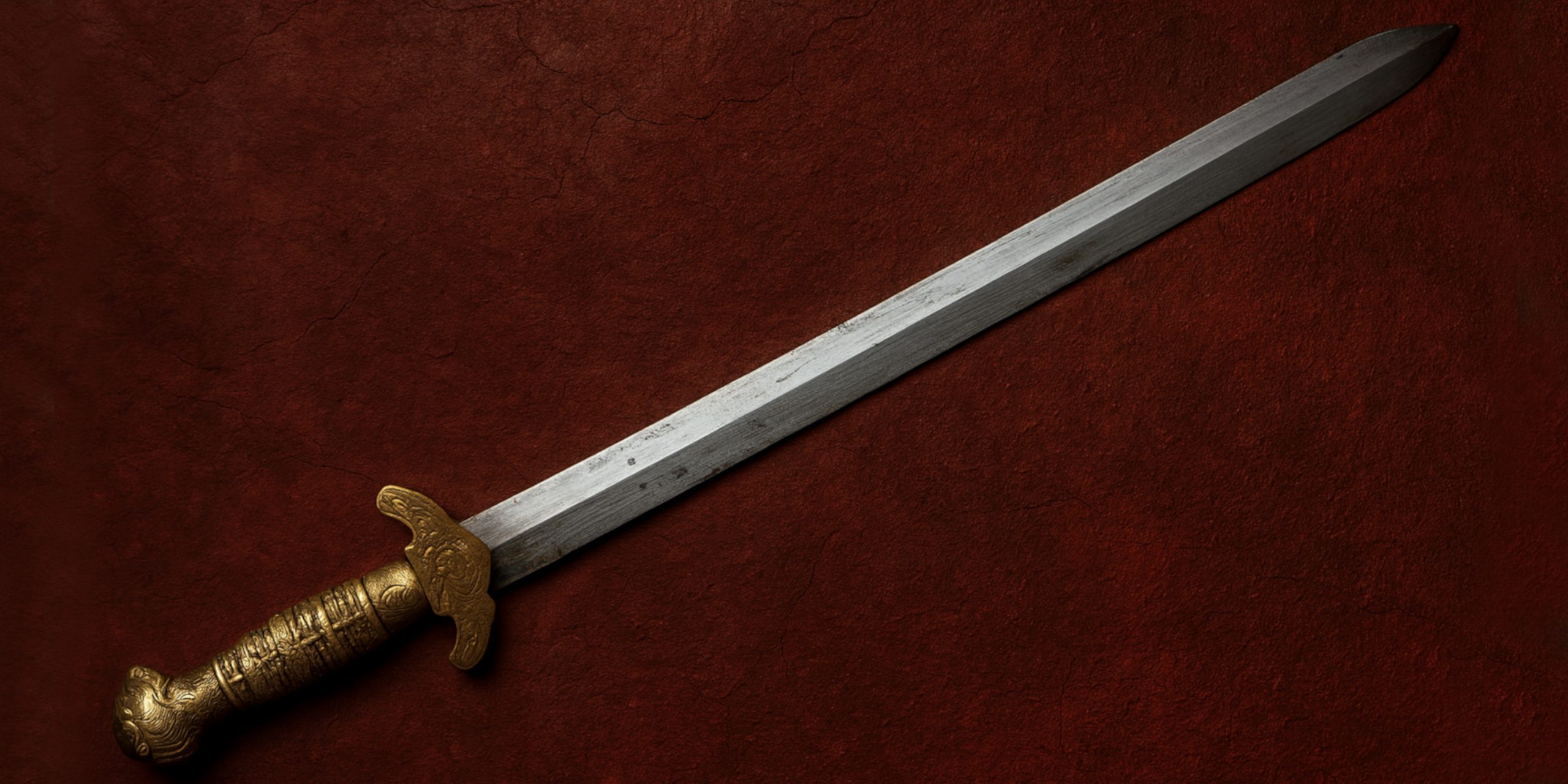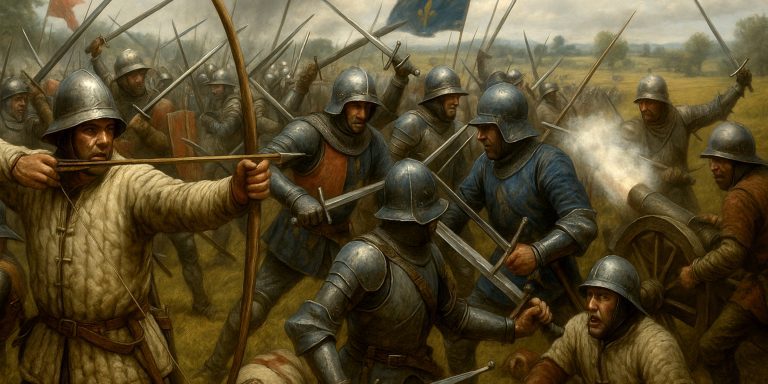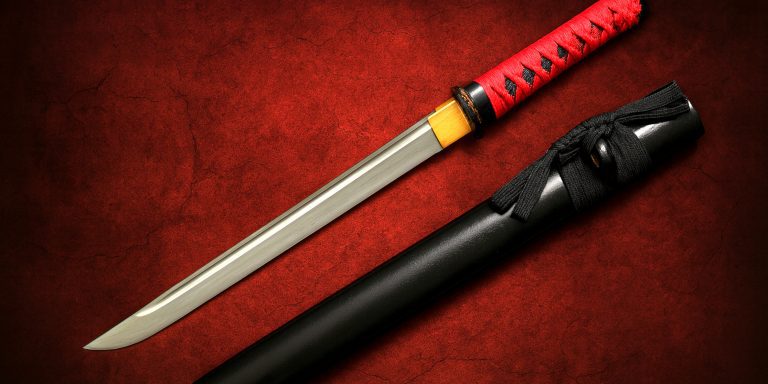
The Duan Jian is a shortened variant of the traditional Chinese Jian, a double-edged straight sword that has symbolised both martial discipline and scholarly virtue for over two millennia. While the long Jian is associated with elegance and balance, the Duan Jian emerged as a more practical, close-quarters alternative. Its compact form made it particularly useful for self-defence, travelling warriors, and certain schools of Chinese martial arts that emphasised speed, precision, and control over reach.
Unlike many Chinese swords designed for cutting and slashing, the Duan Jian maintained the Jian’s thrusting capability, allowing it to pierce light armour while remaining versatile in confined spaces.
Specifications
| Feature | Description |
|---|---|
| Type | Short double-edged straight sword |
| Origin | China |
| Typical Periods | Han Dynasty to Qing Dynasty |
| Blade Length | 30–50 cm (typically half the length of a standard Jian) |
| Overall Length | 45–70 cm |
| Blade Type | Straight, double-edged, tapered towards the tip |
| Hilt | Wood or horn, often wrapped in silk or ray skin |
| Guard (Jian Ge) | Simple oval or straight crossguard, occasionally decorated |
| Pommel | Disc or lobed design for balance |
| Weight | Approximately 0.5–0.8 kg |
| Primary Use | Close-quarters combat, self-defence, martial training |
History and Evolution
- The Duan Jian traces its lineage to the Warring States and Han Dynasties, when smiths experimented with shorter, more agile blades suited to bodyguards and travellers.
- During the Tang and Song Dynasties, shorter swords became popular among officials and scholars for ceremonial purposes, blending martial function with symbolism.
- In the Ming and Qing Dynasties, the Duan Jian gained prominence within internal martial arts such as Tai Chi Jian practice, where shorter blades allowed for controlled indoor or instructional use.
- Archaeological finds reveal short Jian blades buried with high-status individuals, suggesting both practical and ritual significance.
Advantages and Disadvantages
| Advantages | Disadvantages |
|---|---|
| Compact size allows for use in confined spaces | Shorter reach limits effectiveness against longer weapons |
| Lightweight and quick to draw | Reduced leverage for heavy parries |
| Ideal for self-defence and concealed carry | Not as effective against armoured foes |
| Balanced for precision thrusts and deflections | Less historical battlefield presence compared to full-length Jian |
| Excellent training weapon for developing control | Lacks the visual grandeur of longer ceremonial swords |
Comparison with Similar Weapons
| Weapon | Key Differences from Duan Jian |
|---|---|
| Jian (Standard) | Longer blade (70–100 cm), better reach but less manoeuvrable in tight spaces. |
| Dao (Sabre) | Single-edged, curved blade optimised for slashing; Duan Jian is thrust-oriented. |
| Duan Dao | Short curved sabre equivalent; favours cuts over precision thrusts. |
| Wakizashi (Japan) | Similar length but curved and single-edged; Duan Jian offers symmetrical balance. |
| Shortsword (European) | Comparable in size, though European designs often heavier with thicker blades. |
Legacy
The Duan Jian represents the adaptable nature of Chinese sword-making, blending aesthetic refinement with practical utility. While rarely seen on the battlefield, it became an enduring symbol of personal discipline and self-mastery. In martial arts, its short reach demands accuracy and control, making it a respected training tool for internal balance and focus.
Modern reproductions and reinterpretations of the Duan Jian continue to appear in Chinese martial arts schools, film choreography, and collector markets, maintaining its quiet but persistent legacy.
Where to See
You can find examples of historical and replica Duan Jian in several major collections:
- National Museum of China (Beijing) – Han and Tang short Jian examples.
- Shanghai Museum – Fine steel short swords with inlaid fittings.
- British Museum (London) – Warring States and Han period Jian, some under 50 cm in length.
- Smithsonian Institution (Washington, D.C.) – Early steel Duan Jian specimens from private donations.
- Martial arts schools across China and Taiwan that preserve traditional Jian forms.
Collector’s Guide
Collecting Tips
- Verify authenticity through metallurgy and patina; genuine Duan Jian blades are often bronze (early) or high-carbon steel (later).
- Examine fittings and tangs; modern reproductions often use machine-polished steel with artificial aging.
- Seek documentation or provenance if purchasing from private collections or auctions.
Modern Reproductions
- High-quality replicas range from £200–£800, depending on craftsmanship and materials.
- Handmade steel Duan Jian by respected smiths can reach £1,000–£2,500 for martial-grade blades.
Antique Market Prices
| Period | Condition | Typical Auction Price (GBP) |
|---|---|---|
| Han–Tang | Museum grade | £5,000–£15,000+ |
| Song–Ming | Good preservation | £2,000–£6,000 |
| Qing | Complete examples with fittings | £1,000–£3,000 |
| Modern reproductions | Functional or decorative | £150–£800 |
Market Notes
- Prices rise significantly for pieces with intact jade, silver, or bronze fittings.
- The collector market is smaller than that for Dao or long Jian, but demand among practitioners remains steady.
- Be cautious of artificially shortened long Jian being passed off as genuine Duan Jian.
The Seven Swords Takeaway
The Duan Jian stands as a testament to the ingenuity and balance of Chinese sword design. While not a battlefield weapon of legend, it encapsulates the philosophical union of form and function. Its short, poised blade continues to represent the refined edge of Chinese martial artistry and craftsmanship.



